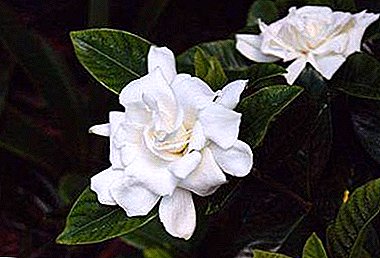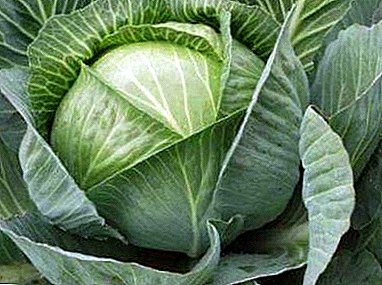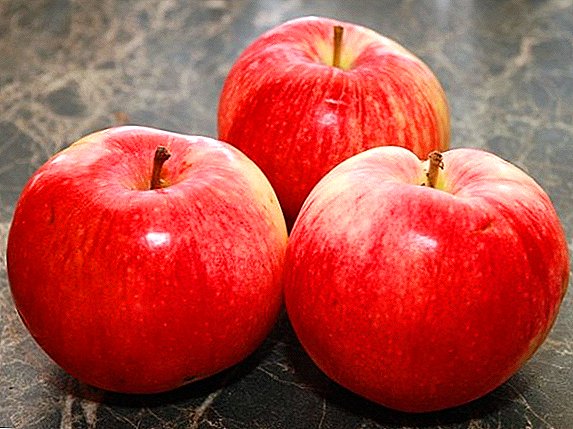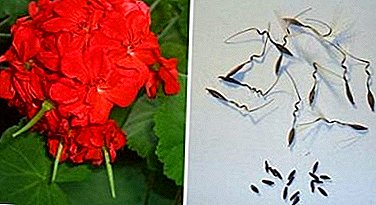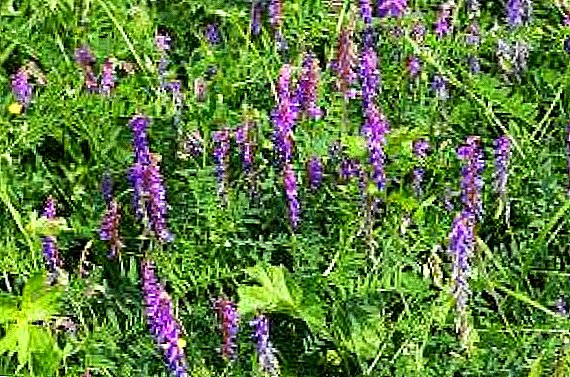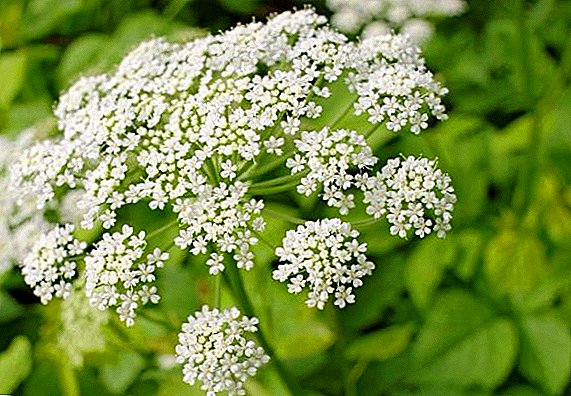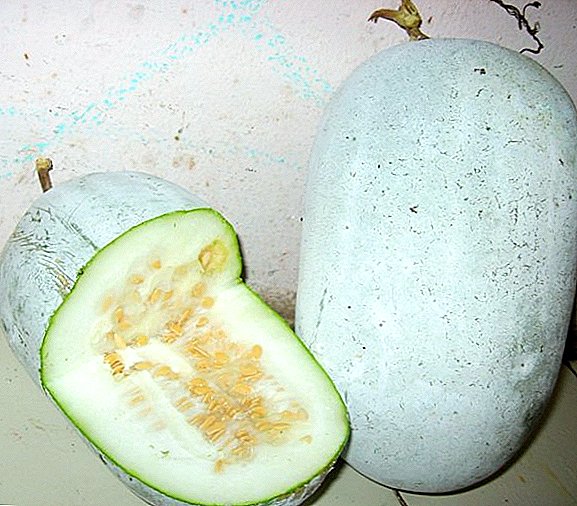 Beninkaz or wax gourd - a bright representative of the pumpkin family. Most often cultivated in Indonesia, China, Latin America. However, beninkaz is a fairly unpretentious plant, so its cultivation can be recommended to gardeners in our climate.
Beninkaz or wax gourd - a bright representative of the pumpkin family. Most often cultivated in Indonesia, China, Latin America. However, beninkaz is a fairly unpretentious plant, so its cultivation can be recommended to gardeners in our climate.
Did you know? Vegetable is used by Chinese healers to treat many diseases.
Wax gourd or beninkaz: description and advantages of pumpkin
Beninkaz (wax gourd) - lianoid annual culture. The root system is well developed. The stems grow to four meters in length, faceted. The leaves are smaller than other pumpkin varieties, lobed, long-petiolate.
Flowers of wax gourd are large, painted in bright orange color, have a pleasant aroma.
 Fruits are oblong or round. In our latitudes, they weigh up to 5 kg, in a warmer climate - up to 10 kg. Unripe fruits are covered with small bristles and a sticky coating resembling wax. Ripe pumpkins are smooth. The raid on them is compacted. Due to this, the fruits do not spoil for a long time.
Fruits are oblong or round. In our latitudes, they weigh up to 5 kg, in a warmer climate - up to 10 kg. Unripe fruits are covered with small bristles and a sticky coating resembling wax. Ripe pumpkins are smooth. The raid on them is compacted. Due to this, the fruits do not spoil for a long time.
It is the long storage period (2-3 years under normal conditions, for example, on the balcony or on the floor in the kitchen) that distinguishes this winter pumpkin from all the others.
Beninkaza is known in medicine for its antipyretic, diuretic, and analgesic properties.
Because of its small size, it is convenient to use pumpkin in cooking, for example, for stuffing with different fillings. The pulp of unripe fruits in raw form can be added to salads, and from mature ones - to cook various casseroles, side dishes, desserts.
What loves beninkaz: choosing a place to plant in the garden
Agrotechnics growing pumpkins beninkaza simple, but requires strict adherence to the rules.
What kind of lighting does beninkaz prefer?
 Wax gourd - the plant is light-loving, so it will be good to grow and bear fruit only when planted on a sunny plot. In the shadows begins to lag behind in development.
Wax gourd - the plant is light-loving, so it will be good to grow and bear fruit only when planted on a sunny plot. In the shadows begins to lag behind in development.
Soil for planting beninkazy
The best option for beninkazy would be fertile, moist soil with good drainage. The preferred level of acidity is 5.8-6.8 pH. The best precursors of wax gourd are potatoes, greens, cabbage, carrots, beets, peas, beans.
Important! It is not recommended to plant beninkaz after squash, squash, cucumbers, other pumpkin varieties, as insects or disease-causing spores could remain in the ground.
Wax gourd planting rules
How to prepare the soil for planting
In autumn, the land set aside for beninkaz must be dug up and manure brought in. In the spring before planting plants in open ground will need to make mineral fertilizers (15 g of ammonium nitrate, 20 g of potassium sulfate, 30 g of ammophos per 1 sq. M of soil).
Seeding beninkazy
To grow a pumpkin beninkaza in our latitudes can be from seedlings. To do this, in the second half of April - the first half of May, 1-2 seeds are put in liter pots. Landing depth - no more than 1-2 cm.
For beninkazy growing from seeds immediately in the open field is not practiced, as it does not have time to ripen.
How to care for crops
 When growing pumpkins in the country, the seed tanks should be placed in a warm place (about 25 ° C and above) and covered with foil. Periodically they need to spray and air. It is recommended to temper the seedlings closer to transplanting, bringing them to fresh air for several hours.
When growing pumpkins in the country, the seed tanks should be placed in a warm place (about 25 ° C and above) and covered with foil. Periodically they need to spray and air. It is recommended to temper the seedlings closer to transplanting, bringing them to fresh air for several hours.
Planting seedlings in open ground
In the second half of May - the first half of June, when the warm weather finally settled, beninkaza seedlings are planted in holes at a distance of 0.7-1 m from each other. Holes pre-pour boiling water.
Carefully placing the seedlings from the pots in the open ground, it is mulched with humus or dry leaves. Until young plants finally take root, they are periodically watered (7-8 liters of warm water under each seedling).
Features care beninkazoy in the open field
How to water the plant
Beninkaz for agrotechnics requires 1-2 irrigations per week. In this case, under each plant make 5-7 liters of water.
Important! Do not water the wax gourd with cold water. The root system suffers from this, the fruits are poorly formed.
How and when to feed a plant
The wax gourd is a vegetable sensitive to feedings. 2-3 times per season is recommended to make the following composition:
- 20 g of potassium sulfate;
- 20 g of ammonium nitrate;
- 30-40 g of ammophos (50 g of superphosphate can be replaced).
Pinching and artificial pollination of beninkazy
 Artificial pollination of beninkazes is carried out by transferring male pollen to female flowers. The most convenient way to do this is with a soft brush.
Artificial pollination of beninkazes is carried out by transferring male pollen to female flowers. The most convenient way to do this is with a soft brush.
In order to accelerate the ripening of fruits in August, the central stem of the plant is pinched. Some gardeners are advised to pinch it after the appearance of several ovaries.
Pumpkin Pests and Diseases
Unlike other varieties of pumpkins beningaz is not susceptible to diseases, resistant to pests.
Wax gourd harvesting
 Beningazu should be removed before the onset of the first frost, cutting pumpkin together with the stem. It should be noted that the immature fruits will not stand for a long time. They must either be consumed immediately or cleaned, cut into pieces and frozen.
Beningazu should be removed before the onset of the first frost, cutting pumpkin together with the stem. It should be noted that the immature fruits will not stand for a long time. They must either be consumed immediately or cleaned, cut into pieces and frozen.
Ripe fruits can be stored for at least a year.
Did you know? Aborigines used as a wax for candles.
Wax gourd - A plant that does not require a lot of attention, so at the dacha its cultivation is not difficult, but diversifies your diet.


